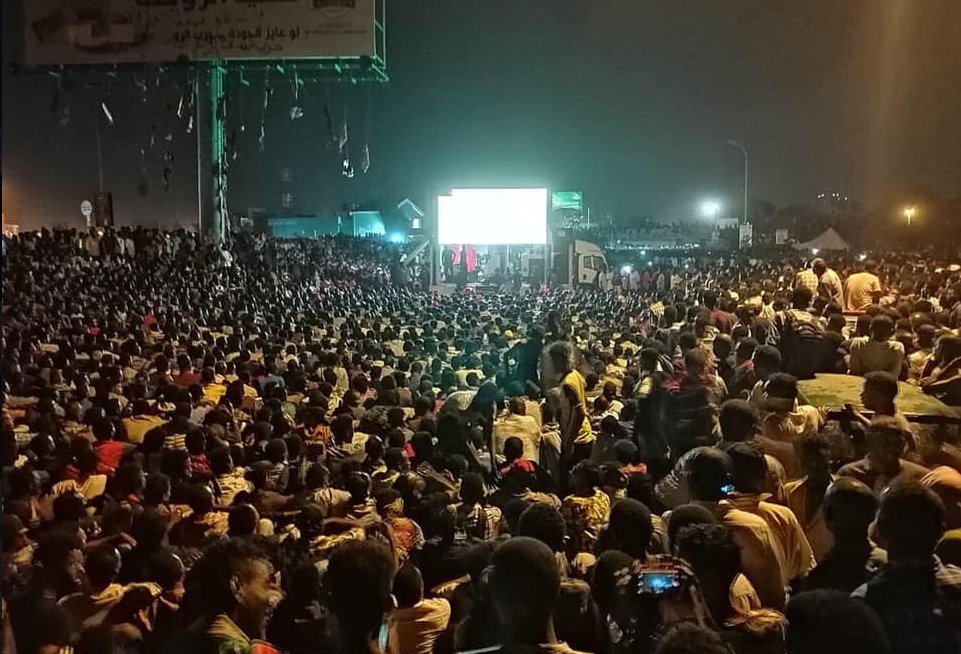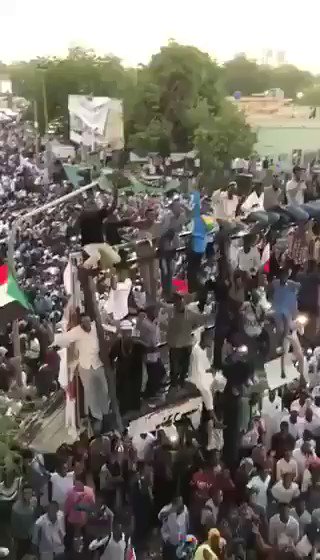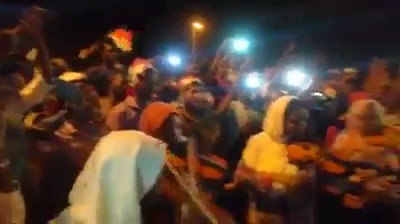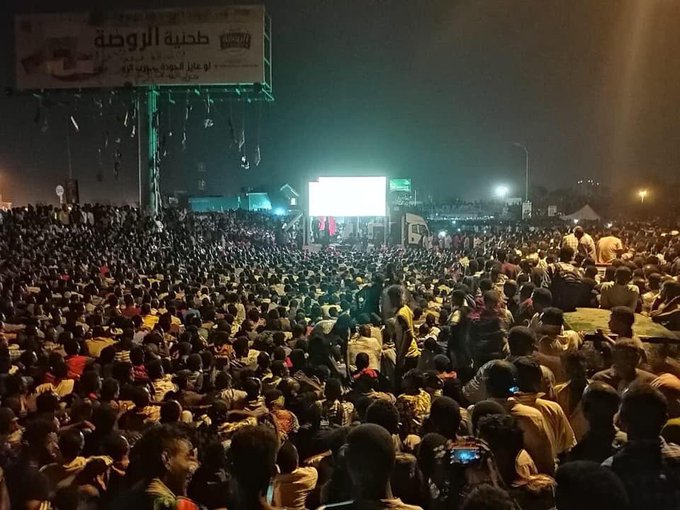For over three weeks, protesters have transformed the space outside the military HQ and made it a microcosm of the future they want.
Where there is revolution, there’s a central gathering point – just think of Egypt’s , in Istanbul, and Habib Bourguiba Avenue in Tunisia. They all captured the world’s imagination as places where the power of the masses couldn’t be ignored.As an architect who studies urban public spaces, and as a , I have wondered since December 2018 – when protesters rose up against Omar al-Bashir’s regime – which space would become Khartoum’s equivalent of Tahrir Square. Which of the Sudanese capital city’s public spaces would hold similar symbolism?
Some open areas in Khartoum, such as Al Saha Al Ghadraa, have historical links to the al-Bashir regime and would not have been acceptable to the protesters. Others would hold immense symbolic value, but would raise questions about links to specific political parties. Buildings of significance, such as the parliament in Omdurman, don’t offer a public square in the true sense of the word, and so would not be an appropriate gathering space.
The answer emerged on 6 April 2019. Hundreds of thousands of people marched to the Sudanese Army’s headquarters in the Ministry of Defence’s complex. That march . Weeks later, and with al-Bashir ousted, the sit-in continues.
It’s a powerful, significant choice of venue. First, the army headquarters are usually off-limits. Photography is not permitted and access is restricted. Yet the army permitted a massive gathering on its doorstep. Second, the army actually went on to actively defend the protesters against attacks by the National Intelligence and Security forces. The venue offered protection and security.
Finally, it was a symbolic choice: the protesters knew that army collaboration would be crucial to achieve a transitional government.All of this echoes what and history have repeatedly . Urban public spaces may be built to represent governments, but they are often appropriated by citizens and become sites of protest. The space in Sudan has not been a gathering place before, and the roads that surround the complex actually hold no special characteristics spatially or architecturally. Yet they have been appropriated – and they have come to serve the protesters’ purpose well.

These diagrams, superimposed on a Google image, show the extent of the occupied space and the key functions and access routes as well as the traffic and pedestrian routes. Credit: Mohamed Abd Abdelhamied Bakhit.
The Sudanese military complex in Khartoum is comprised of three sections. The Land Forces occupy a section that’s built to resemble army tanks. The Air Force’s section is shaped like an airplane, and the Navy’s resembles a ship. This approach to architecture – buildings that project their meaning in a literal way – has a name: “”. The spaces adjacent to the buildings are inhabited by protesters who literally live on the site.
The complex sits just north of the airport and is flanked on the east and west by the Hay al Matar (Airport District) and the neighbourhood of Burri, which has been one of the during the revolution. A couple of kilometres to the north is a bridge that crosses the Blue Nile to Khartoum North.
This has transformed the streets. Some have said that this space is now a microcosm of the future Sudan that the protesters envision. It’s a space where freedom of expression is permitted. Murals and street art are everywhere.
Temporary classrooms have been set up to commemorate a teacher who was killed by the security forces. Makeshift clinics staffed by volunteers offer free medicines. We are being told by people on the ground about the free food, water and medicines that are being provided through donations. Street children and the homeless have been accommodated. Engineering and architecture students are working to build . have been set up.
Street traders are selling their goods. Cultural activities abound, too: musicians and political leaders from different parties visit the area each day to entertain and educate.
It’s important to point out that the situation is in flux. The routes were pedestrianised. Protesters would not let vehicles in, apart from those making important deliveries. But Sudan’s military council has now called for the .
What next?
The fate of other iconic places of protest hasn’t always been celebratory or positive. Sometimes, move to eradicate history and memory in these spaces.
There are hopes that Khartoum’s story might be different. Already, architectural groups on social media are discussing the possibility of retaining this space as a “freedom square” in future plans for the city. Others have argued that this is not possible because of the site’s military nature.
But whatever happens, there’s no doubt that Khartoum’s military complex – and its role as a space for public protests and uprising – will go down in history and would have to be acknowledged in any future visions for the city.
What has changed in Sudan?
As well as their historical relationship, Sudan and South Sudan are closely linked today by the oil industry that straddles the two states. The commodity itself is largely located in South Sudan, but its only route to the sea requires transiting through Sudan. Both countries’ economies rely heavily on oil, which is responsible for the biggest component of each nation’s GDP.
This reality suggests that Sudan should remain completely committed to ensuring peace in South Sudan. This would allow oil to flow securely, which is particularly important Sudan’s huge protests, partly born of economic grievances, continue.
The politics of the region, however, frequently defy this kind of conventional logic. Instead, decisions are often driven by factors such as localised politics, ethnic competition, individual ambition, community perceptions, and complex networks. There is also the fact that some leaders in Sudan resented the peace deal al-Bashir struck with southern rebels back in 2005, following a long and bitter civil war. The figures who opposed that agreement, which eventually led to South Sudan’s independence in 2011, may assert themselves following al-Bashir’s exit.
At the same time, Sudan’s is still very much ongoing. As long as this uncertainty remains unresolved, its leaders may be unable to turn their attention to issues beyond the country’s borders. Given that Western states and international organisation have already , this would leave South Sudan with little external direction or support.
What has changed in South Sudan?
From South Sudan, leaders have also been watching events in Khartoum closely and working out their responses.
In February and March, as the protests escalated in Khartoum, President Kiir expressed his support for al-Bashir. After al-Bashir’s removal, however, the South Sudanese government quickly changed tack and congratulated the new military rulers. As Sudan’s leadership continues to take shape, Kiir’s government is likely to continue offering its backing to whoever is apparently in charge.
This may seem fickle, but Juba has little choice. After South Sudan gained independence, al-Bashir and Kiir agreed to end their support to insurgencies in each other’s territories. Khartoum’s removal of its support for armed and opposition groups in South Sudan allowed Juba to more effectively assert its sovereign authority in the country. Following al-Bashir’s removal, Kiir cannot afford to alienate its neighbour and risk that pact being reversed.
Nonetheless, al-Bashir’s departure will necessarily change some aspects of the relationship. Although there are several links between elites of the two countries, al-Bashir was the main individual leading the peace process, sometimes acting against the interests of his own inner circle. Now he is no longer driving the negotiations, figures in both South Sudan’s government and opposition could smell an opportunity and act as in the hope of getting a better deal.
The new uncertainty could be particularly disruptive within South Sudan’s opposition. The SPLM-IO’s leader Machar is currently calling for a six-month extension to the deadline for forming a transitional government and refuses to return to Juba, citing security fears and poor resources. Machar had close links with al-Bashir, who supported his rebel forces as proxies in the Second Sudan civil war (1983-2005), and has continued to receive material from other military leaders in Sudan. Since al-Bashir’s ouster, however, Khartoum’s elites appear unable or unwilling to provide the guarantees and resources Machar is looking for.
More broadly, shifts in Khartoum are likely to contribute to the politicking within South Sudan’s opposition. Individuals like Taban Deng Gai, Bampiny Monytuil, Gatkuoth Gathoth and Johnson Olony, amongst a constellation of other opposition armed group leaders, are all reportedly working to secure good relations with the emerging dispensation in Khartoum. Since the of the powerful opposition military leader Peter Gadet earlier this month, a number of his deputies and acolytes are also asserting themselves, drawing significant support as they look to inherit Gadet’s prominence and ability to master South Sudan-Sudan politics.
Some of these individuals challenging for greater standings appear to have stronger relationships with Sudan’s new military leaders than Machar. It is not implausible, for example, to imagine Vice-President Taban Deng Gai returning as the main opposition figure in a Transitional Government in South Sudan, similar to the way he into the role of Vice-President after the 2015 peace agreement. That move effectively split the SPLM-IO as Machar and others continued to fight against Kiir’s government.
Confusion and collapse?
At the macro-level, events in Sudan should not affect its priorities and role in overseeing South Sudan’s peace process. Khartoum needs stability in its southern neighbour to ensure both countries’ oil revenues. The reality, however, is that politics in Sudan and South Sudan involves a wide range of competing personalities, personal interests, and often contradictory elements.
What this suggests is that figures in Sudan may turn inwards as the uncertainty continues, resulting in less pressure and resources for South Sudan. This could, in turn, allow more room for elites in South Sudan to manoeuvre, leading to more complications. The resulting confusion will cause further delays in the implementation of the peace deal and, in the absence of any Sudanese or other international intervention, its possible collapse.
Sudan may try to find a way to ensure sufficient stability in South Sudan to keep the oil flowing, perhaps with the backing of China and Russia. But if the situation destabilises, the results would be disastrous for both Sudan and South Sudan. In Sudan, protesters are still on the streets, in part motivated by the country’s ongoing economic crisis and rising prices. In South Sudan, both President Kiir’s patronage structures and the fragile peace deal rely on significant funding and external support to stay afloat.







No comments:
Post a Comment